You Need an Anvil. Really.
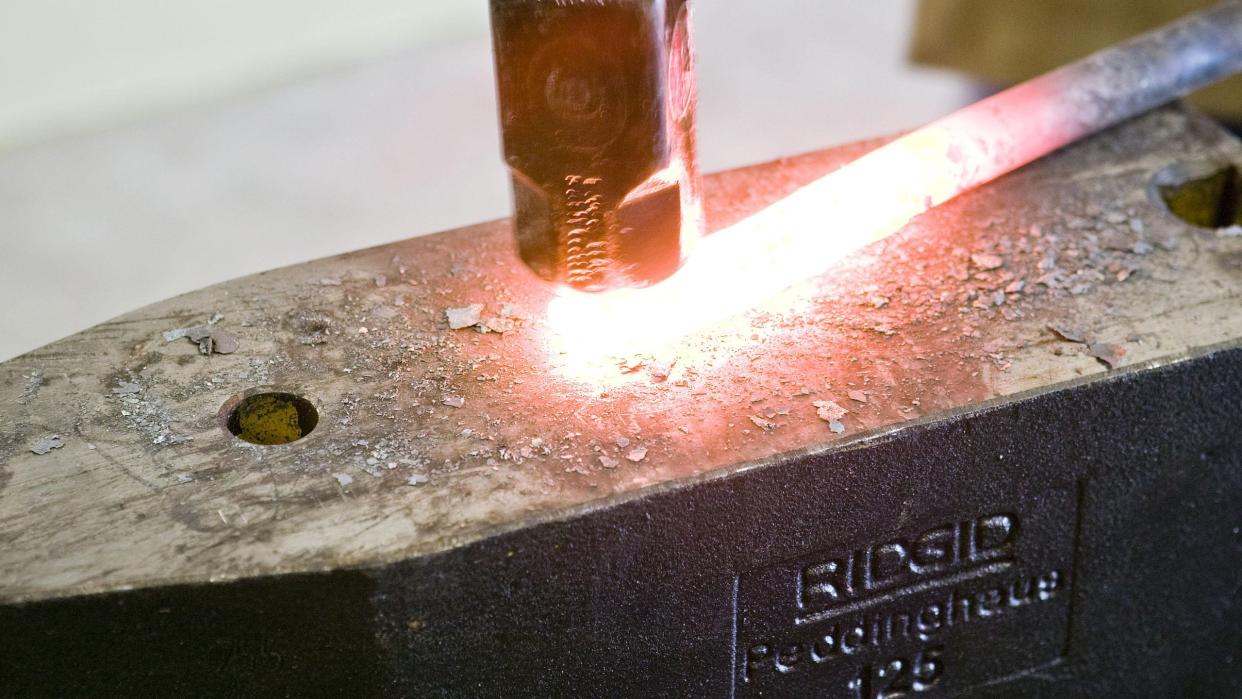
"Hearst Magazines and Yahoo may earn commission or revenue on some items through these links."
I don't blame you if you're tired of people telling you what you need. You need to eat this or that. You need to buy this car or that power tool or a shirt that makes you look jacked.
Forget all that. Just forget it. What you really need is an anvil. Seriously. Every home should have one. No shop is complete without it. Once you own an anvil, you’re equipped. No, really. We should be a nation of anvil owners. They’re as necessary as tires on your car, money in the bank, or a refrigerator with food in it. Okay, maybe I went too far with that last one.
All kidding aside, anvils are great. Let's say you want to try your hand at knife making and you're just itching to pound some hot metal into a blade. You need an anvil. Suppose you are into restoring old trucks or farm equipment. Good luck getting some of those parts. On the other hand, forming up shackles and fittings out of a hot piece of steel is no big deal for the anvil-equipped. Maybe you want to do decorative iron work, make a woodworking chisel, or even custom forge gardening implements. With an anvil, you're halfway there. You can also bolt a bench vise to an anvil using its pritchel and hardy holes. Talk about a bench vise that stays put. There you go.
And you don't need an anvil that weighs 250 pounds, like the hulking brute you see above. Even a small anvil is super useful when you need to hit, shape, bend, or cut metal parts. And that statement includes bench vises that have an anvil built in.
Once you have to hit a piece of hot metal, and I really mean hit it (no pussyfooting around here), you’ll be glad you have an anvil. If you’ve ever found yourself kneeling on the garage floor to pound on something, using the floor as your work surface, then you’ll instantly recognize the benefit of working on an anvil or an anvil-equipped vise positioned at a comfortable height.
So you see, it’s not as outrageous as it sounds to own an anvil. There are lots of benefits to owning one.
You might read this and say we’re all wrong. You don’t need an anvil. Forget it. But, then again, you might read it and rush out and buy the first smack-worthy anvil you set your eyes on. Both would be a mistake. Make an informed anvil decision.
Types of Anvils
Like any tool, anvils come in a variety of shapes and sizes, and are suited to different purposes. Some anvils are built for blacksmiths, artisans who form red hot metal on a surface, such as making a knife blade or building decorative iron fences. Other anvils are designed for farriers–men and women who shoe horses and do hoof-care. Every horse shoe, to one degree or another, starts out as a blank that is custom-shaped on an anvil to suit the horse's hoof and the animal's activities, such as pulling a wagon or riding.
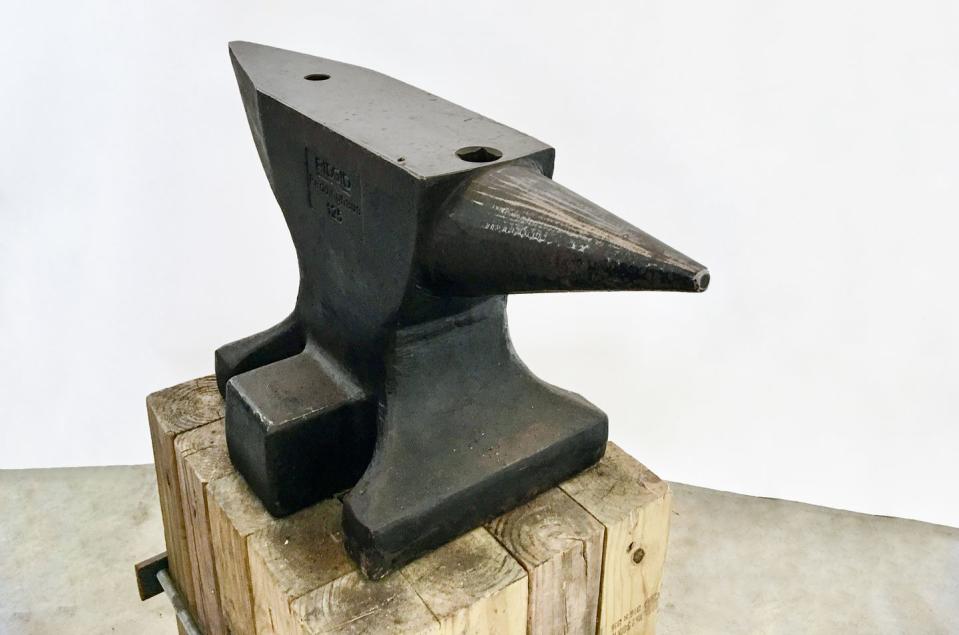
And there are also bench vises with a hefty anvil incorporated into them. These are handy for small tasks, like getting a centerpunch accurately in position to drill a piece of metal.
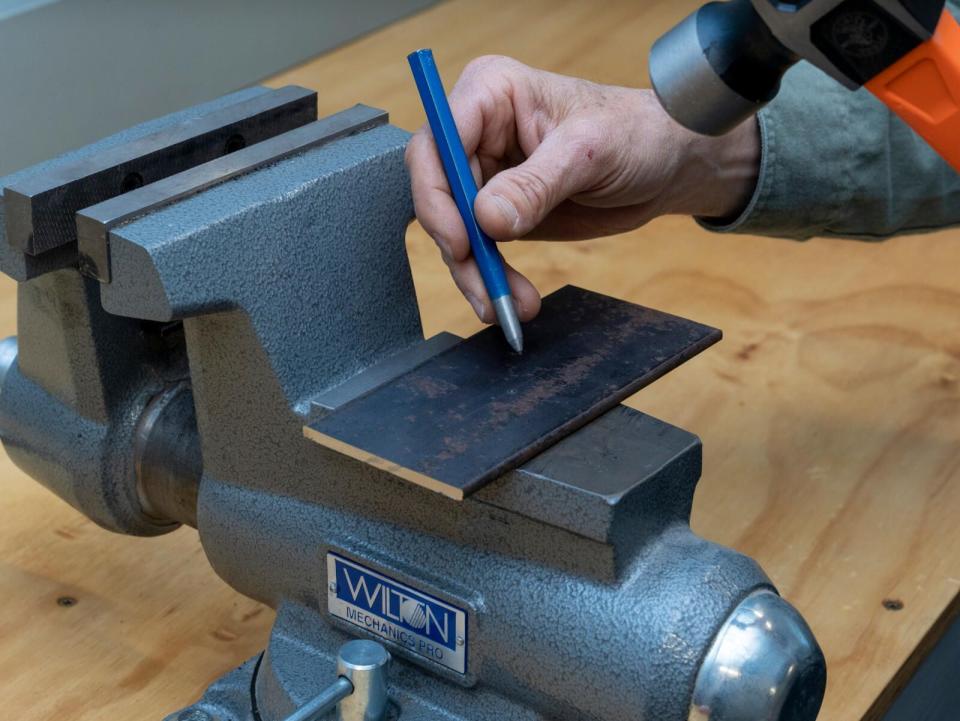
855M Mechanics Pro Bench Vise
$473.99
amazon.com
Thomas HenggeIf you don’t want a dedicated anvil taking up space in your shop, the next best thing is to buy a bench vise with an anvil. The massive Wilton Mechanics vise that we have in our shop has such a feature, and we find it invaluable. Since the vise sits on a swivel base, you can turn the anvil to the front for better access to the anvil surface.
Finally, there are vise-anvil hybrids, such as the Kanca Anvillo.
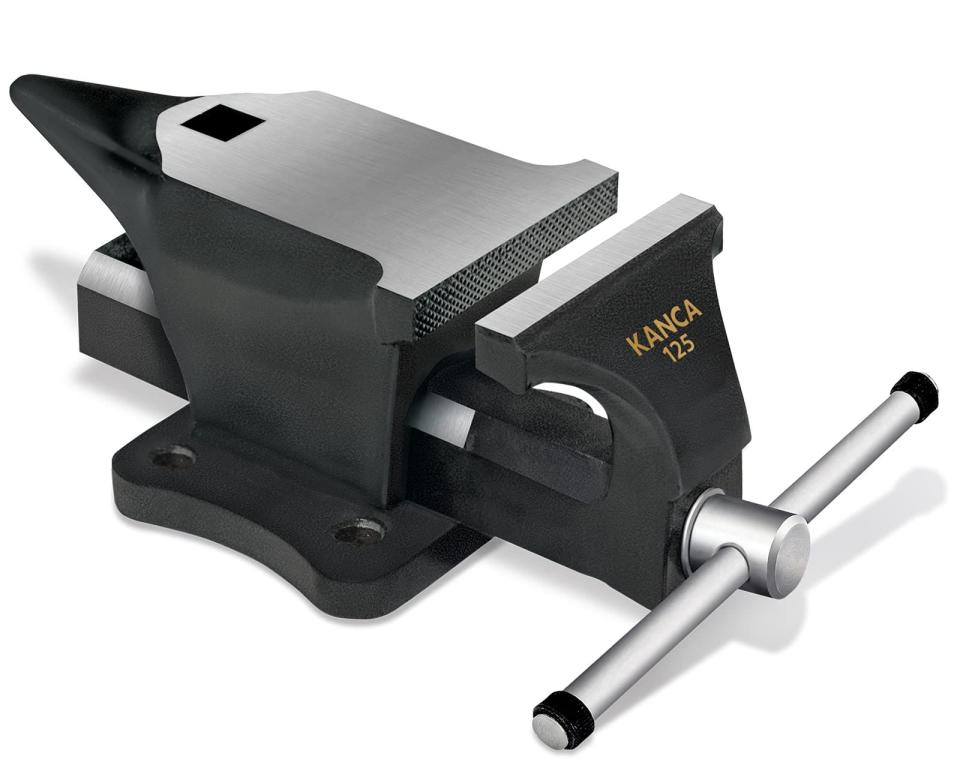
ANVILLO Anvil and Vise Combined
$455.57
amazon.com
The Kanca Anvillo is half anvil, half bench vise. Both the anvil portion and the vise jaw are drop forged steel. Even the vise spindle is forged. The 38-pound vise can be bolted to a bench top or a pedestal, to give you access to the horn and anvil surface from all sides (unlike a bench vise, it doesn’t have a swivel base).
Anatomy of an Anvil
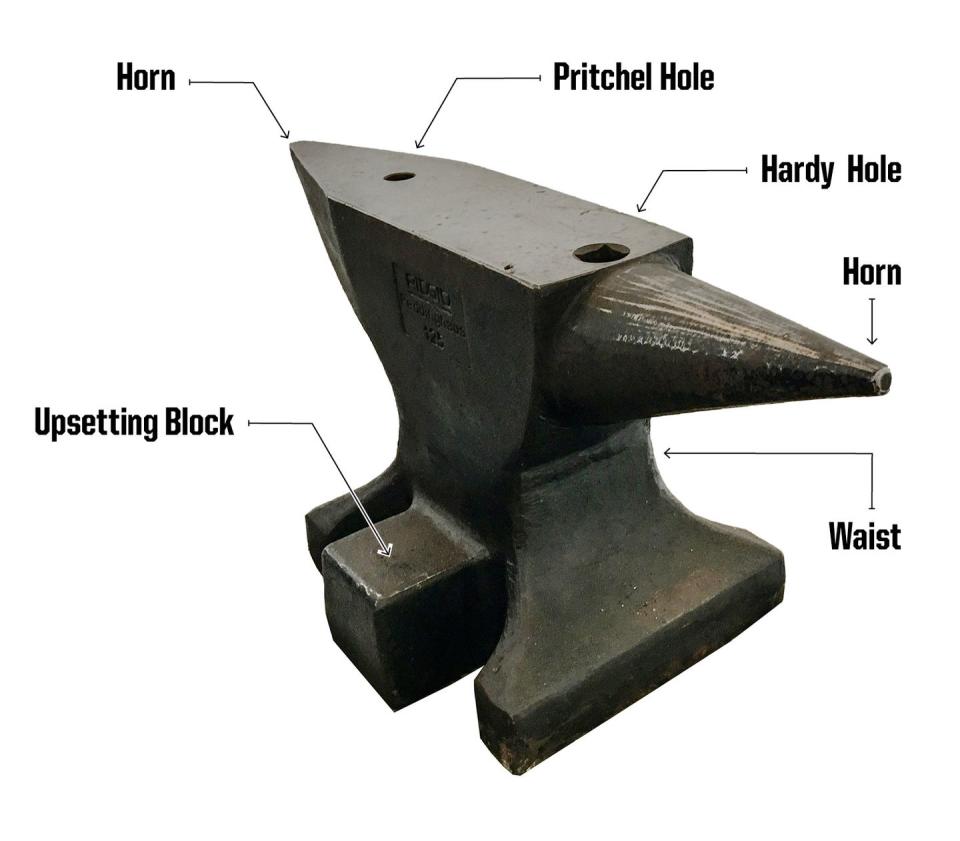
The first thing you might notice about it is that it’s not strapped to its mounting block. We unstrapped it to permit us to move it around a bit easier. For blacksmithing, you need to strap the anvil down. Use 22-gauge plumbers strap for light-duty to medium duty metal pounding; 18-gauge structural tie-down strapping or perforated steel for heavier work or, if you really plan to go all out, strap the anvil to its base using cold-rolled or hot-rolled steel.
Just as careless saw cuts or drilling can damage a workbench, so it is with anvils. You can damage them with careless use. That’s why an anvil has various features and work surfaces. You can't do every metal-working operation on one surface or in one place. Not every part of the anvil is suited to every job.
Here’s a feature-by-feature guide to an anvil. Consider it Anvil 101.
Face
This is the prime work surface on an anvil. Here is where you shape parts. Lay metal across the face and strike it. Accuracy counts as much as force. To bend metal, lay it over the face and strike the metal that is free-hanging.
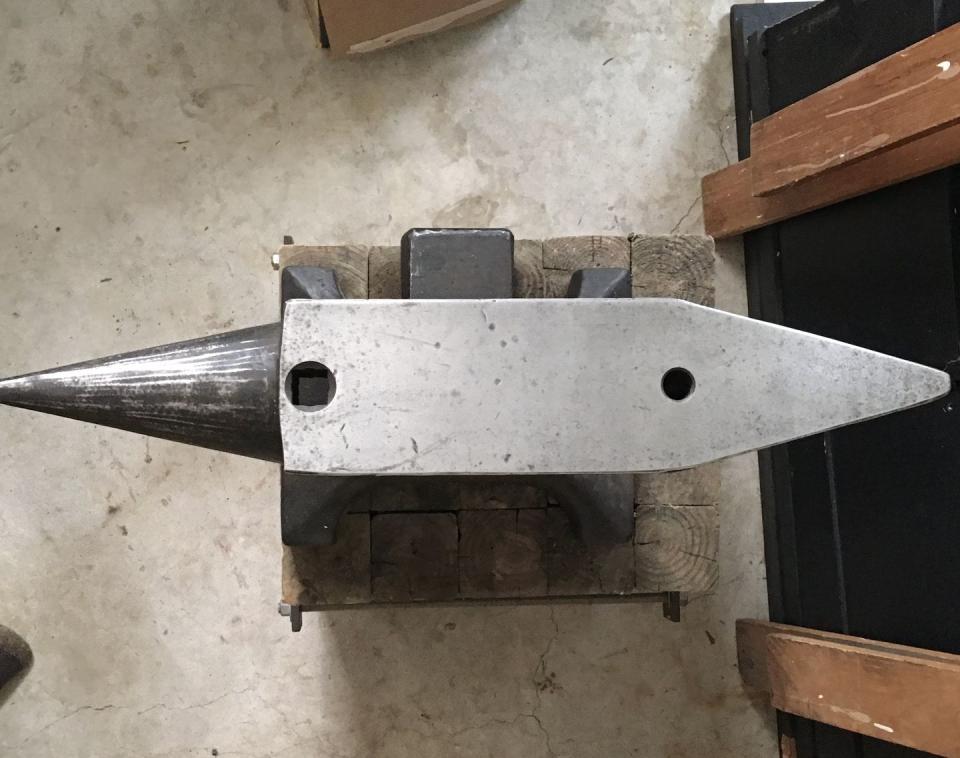
Hardy Hole and Pritchel Hole
Every anvil has a square hole in its face; most also have a smaller round hole.
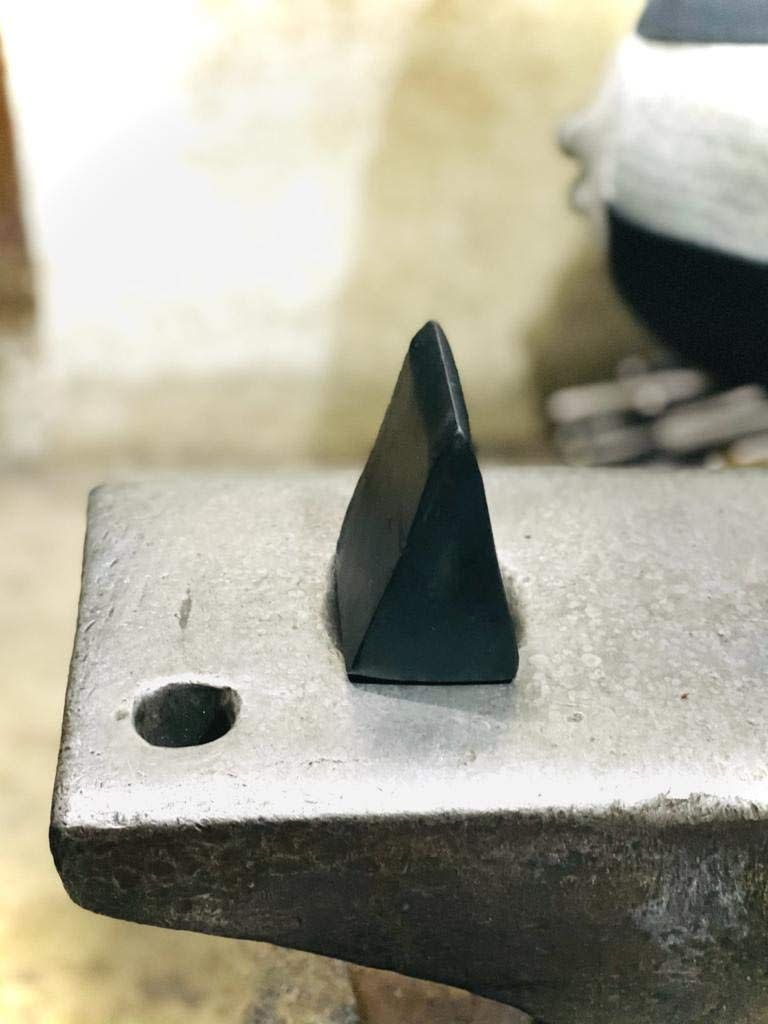
Blacksmith Anvil Hot Cut Hardy Tool
$34.99
amazon.com
A hardy is a square-shouldered tool that fits into the hardy hole in the face of the anvil. Hot metal is laid across the hardy and struck with a hammer. As the hot metal is driven over the hardy, it is either shaped or cut. In the case of this chisel-shaped hardy, the metal would be cut as it is pounded over the tool’s edge.
Pritchel hole
A pritchel hole (sometimes simply called "the pritchel") is used in conjunction with a tool, called a pritchel. This is a large spike-shaped center punch that is driven through a horse shoe or a hole in a horse shoe (or any piece of red hot metal). As the pritchel is driven into the heated metal, it either forms a new hole or enlarges an existing one. The pritchel hole in the anvil enables the blacksmith or farrier to drive the pritchel through without damaging the anvil in the process.
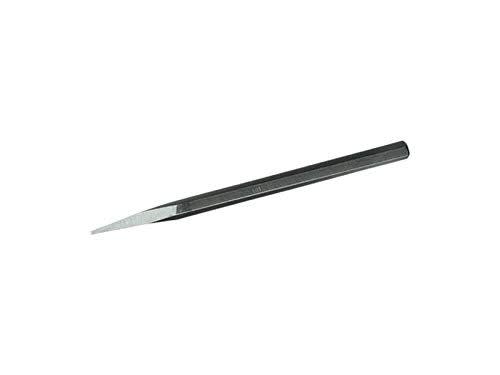
Viking Pritchel
$40.50
amazon.com
Upsetting block
The chunk of metal at the base of this anvil is called an upsetting block, an unusual feature found on heavy-duty anvils. You stand a piece of heated steel on the block with the hot end down and the cold end facing up. Holding the metal at about the midway point with a pair of tongs, you strike the cold end of the metal with a hammer or sledge. This drives the hot end against the block, enlarging it, and shortening the metal in the process. The widened and enlarged end of the heated steel is then formed into a tool or a decorative shape.
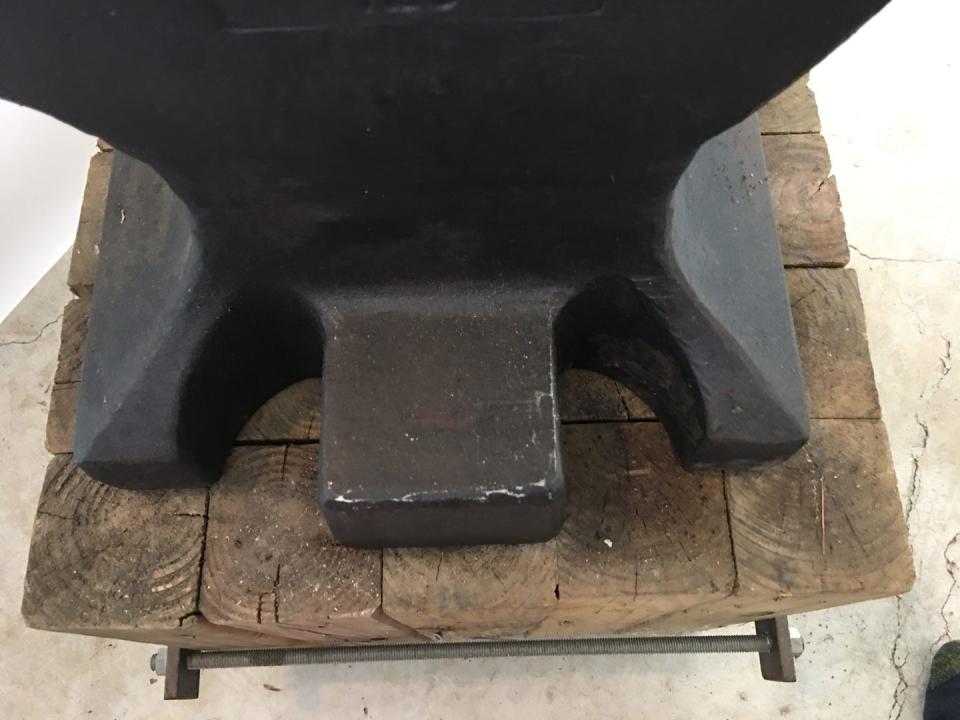
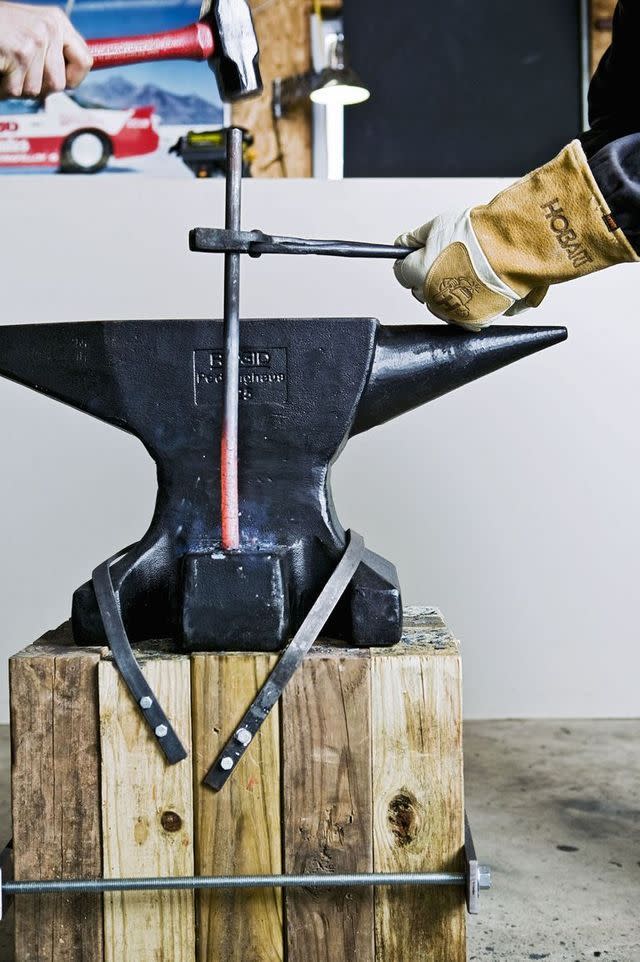
You Might Also Like

